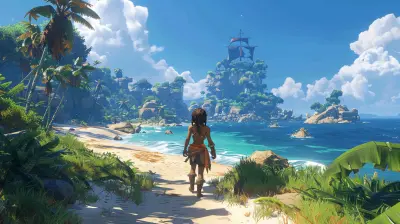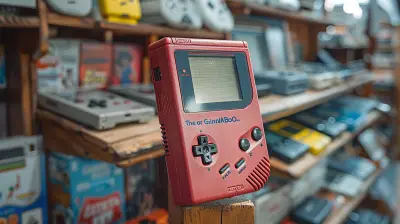The Evolution of Platformers: From 2D to 3D
12 September 2025
Hey there, fellow gamers! Let’s take a nostalgic journey together, shall we? If you’ve ever leapt over a pit of spikes, hopped across platforms to collect shiny coins, or stomped cartoonish enemies underfoot, you’ve played a platformer. But have you ever stopped to think about how far the genre has come?
From humble 2D beginnings to fully immersive 3D worlds, platformers have evolved in ways that would blow the minds of early '80s players. This genre has stood the test of time by adapting, innovating, and straight-up revolutionizing what it means to "jump and run." So, grab your favorite controller (or keyboard, we don’t judge) and let’s dive headfirst into the journey of platformers!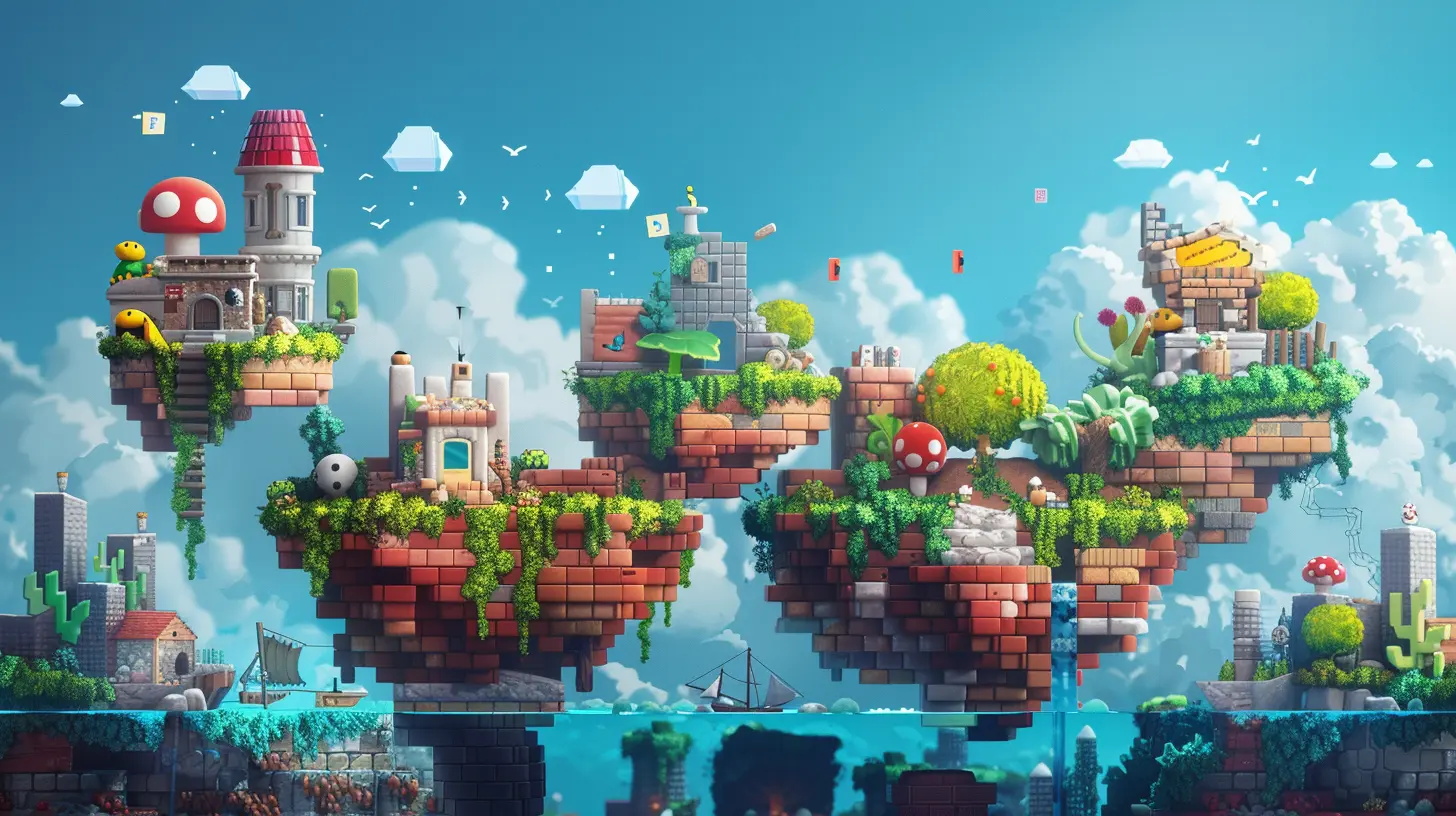
What Is a Platformer, Anyway?
Before we get ahead of ourselves, let's break it down. At its core, a platformer is a game where movement—especially jumping between platforms—is the main mechanic. Think classic Mario, Sonic, or Donkey Kong.These games are usually action-packed, timing-based adventures that test your reflexes, puzzle-solving skills, and sometimes your patience (we’re looking at you, underwater levels).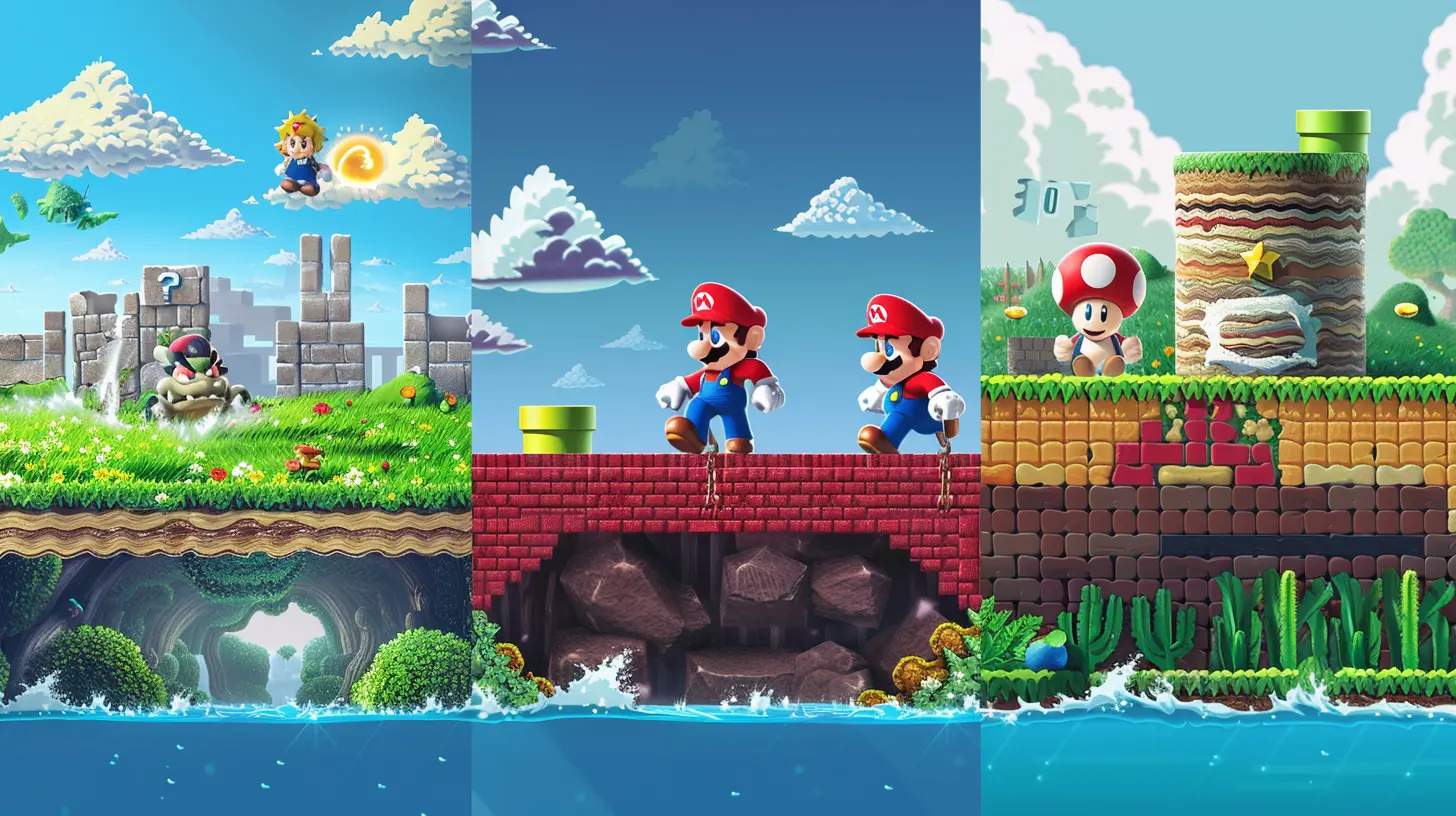
The Birth of Platformers: 2D Glory Days
Donkey Kong: The OG Platformer
Let’s rewind to 1981. Arcade machines were booming, and along came a game where a carpenter named Jumpman (later known as Mario) had to rescue his damsel in distress from a barrel-throwing ape. Ring a bell?Yep, Donkey Kong. While pretty basic by today’s standards, it laid the foundation for platformers. There were platforms, you had to jump, and timing mattered. It was simple but wildly addictive.
Super Mario Bros: The Game-Changer
Fast forward a few years to 1985, and boom—Super Mario Bros drops on the NES. It wasn’t just a platformer; it was the platformer. Side-scrolling became the new standard. Suddenly, you weren’t just climbing up or down—you could move forward!Nintendo absolutely nailed the mechanics, from handling and pacing to level design. Each world felt unique, challenges were fair (mostly), and secrets were hidden everywhere. It gave the genre a huge boost and inspired countless clones and competitors.
Sonic the Hedgehog: Speed It Up
In 1991, Sega said, "Let's do something different." They added speed to the mix. Sonic was a blue blur who zipped through loops, springs, and slopes. Suddenly, platformers weren't just about careful jumps; they were about momentum, timing, and style.The 2D scene was thriving—Mega Man, Metroid, Castlevania—all of these brought their own twist to the platforming formula.
But then… tech evolved. And so did games.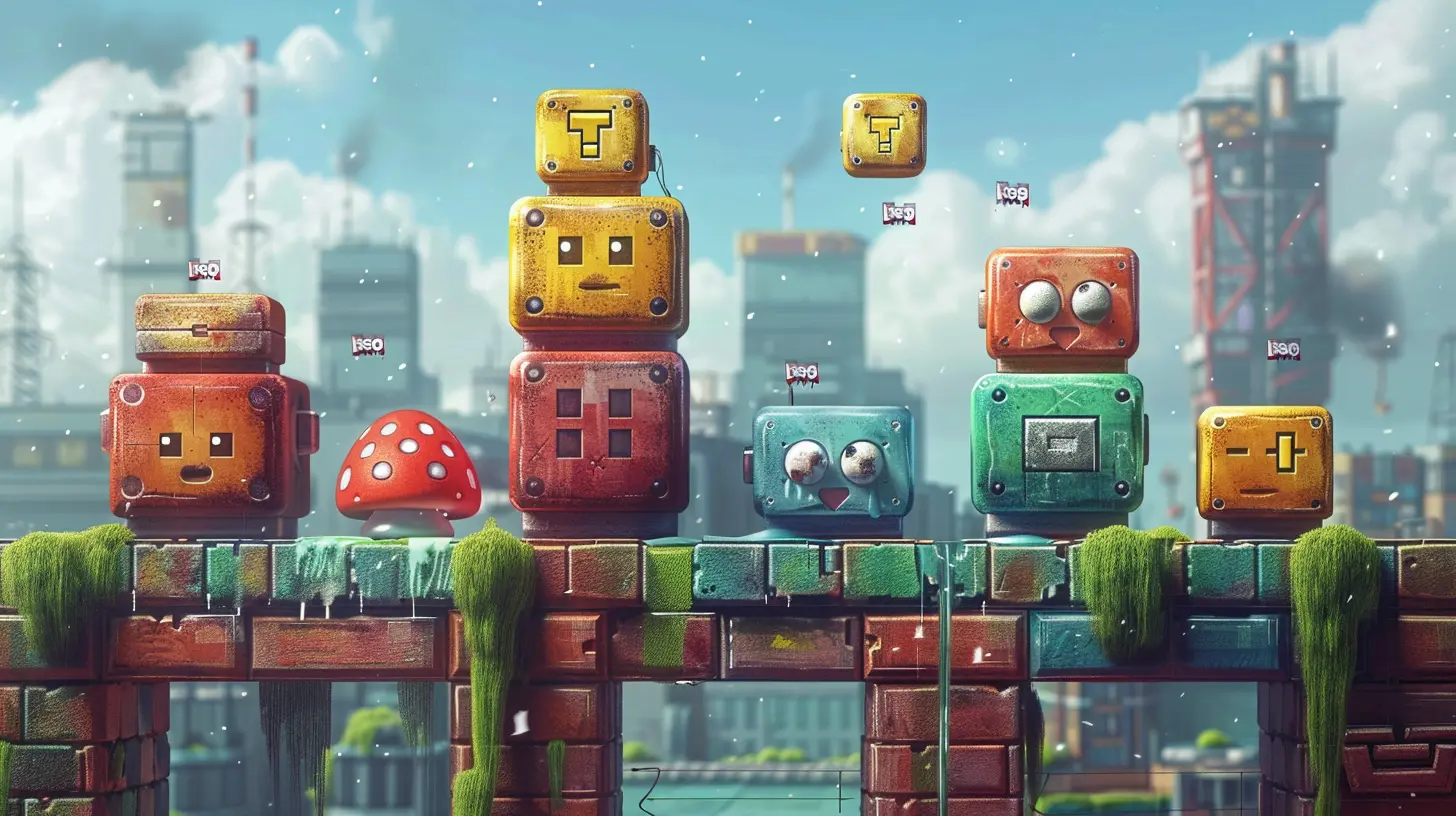
The Leap to 3D: A Whole New Dimension
Super Mario 64: A Bold New World
It’s 1996. The Nintendo 64 hits the shelves, and with it comes Super Mario 64. This wasn’t just an upgrade. It was a full-blown evolution. For the first time, players could explore a 3D world where Mario didn't just run left or right—he could move in any direction.People's jaws dropped. The controls felt intuitive, the camera was revolutionary (for its time), and the level design was genius. It wasn’t linear anymore—you could explore, find secrets, and solve puzzles on your own terms.
This was the point where the platformer genre became something else entirely.
Tomb Raider: Platforming Meets Adventure
Okay, sure, Tomb Raider might be better known for its action and puzzles, but Lara Croft’s acrobatics make it a platformer at heart. Jumping across ledges, climbing walls, pulling levers—it’s all there. And in 3D, it felt like an action movie you were controlling.Suddenly, platformers weren’t just "kids’ games" anymore. They had story, grit, and cinematic flair.
Banjo-Kazooie & Spyro: The Collect-A-Thon Era
Late '90s kids, if you know, you know.Enter Banjo-Kazooie and Spyro the Dragon, both staples of the N64 and PlayStation era. These games took 3D platforming and layered on collect-a-thon elements. You weren’t just getting from Point A to B—you were scouring entire worlds for puzzle pieces, gems, or musical notes.
The levels were massive, colorful, and full of charm. This era put the exploration in platformers.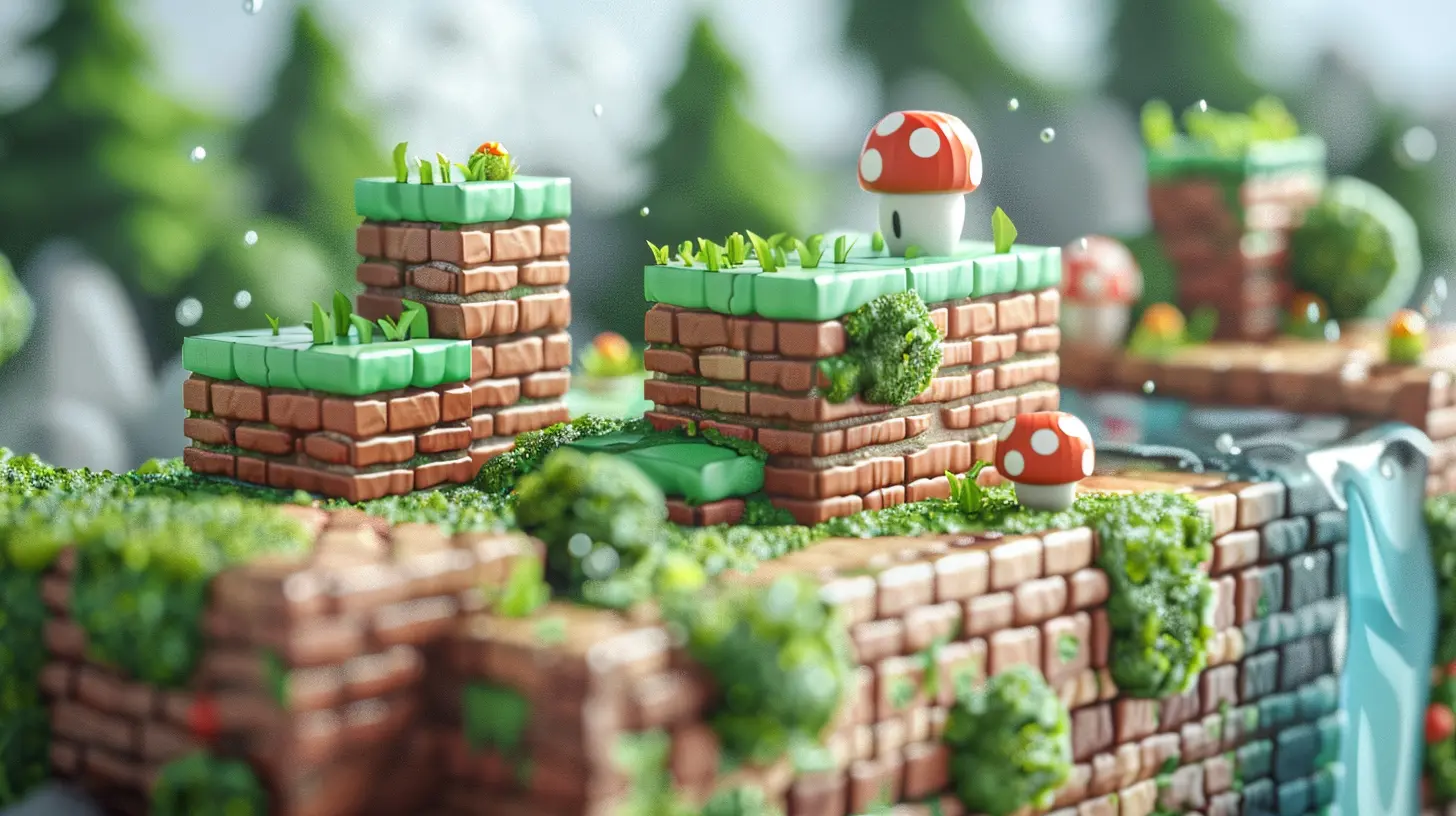
The Struggles of 3D Platformers
Early Camera Woes
Let’s be honest—those early 3D cameras were clunky. You’d miss jumps because the camera decided to have an existential crisis mid-air. Developers were still figuring it all out, and not every game had the finesse of Mario 64.Identity Crisis
Some games tried to do too much. They added combat, stealth, RPG elements—you name it. In doing so, they lost what made platformers great: tight movement, creative level design, and satisfying jumps.The genre almost faded into the background for a while, as shooters and open-world games took the spotlight.
The Platformer Renaissance
Indie Fuel
Then came the indie devs—those brave, creative souls who brought platformers roaring back to life.Games like Celeste, Hollow Knight, and Shovel Knight reminded us that 2D platforming still had plenty left in the tank. With gorgeous pixel art, tight controls, and deep stories, these games proved that 2D wasn’t a step back—it was a stylistic choice.
Celeste in particular hit hard—not just because of its precise controls, but because of its emotionally raw story. Mental health, perseverance, self-discovery—who knew a platformer could make you feel so deeply?
3D Platformers Find Their Groove
Meanwhile, 3D platformers were making a comeback too. Super Mario Odyssey, Ratchet & Clank (the reboot), and Crash Bandicoot’s remasters showed that people still loved the genre. And when the old games were polished up and re-released? They sold like hotcakes.And let's not skip over It Takes Two, the cooperative platformer that won Game of the Year in 2021. It wasn’t just fun—it was a literal embodiment of what creative platforming can look like in modern gaming.
Key Differences Between 2D and 3D Platformers
| Feature | 2D Platformers | 3D Platformers ||----------------------|--------------------------------------------|-----------------------------------------------|
| Movement | Side-scrolling (up/down, left/right) | Full directional movement (360 degrees) |
| Camera | Fixed or side-view | Dynamic and sometimes user-controlled |
| Precision | Extremely precise, pixel-perfect jumps | More forgiving due to 3D space |
| Exploration | Usually linear or stage-based | Often open or semi-open world |
| Complexity | Simpler control scheme | More complex controls and camera mechanics |
| Nostalgia Factor | Strong retro feel | Feels more immersive and modern |
The Best of Both Worlds: Hybrid Platformers
Here’s the fun part—some devs decided, “Hey, why not both?” And out came hybrid platformers that blend 2D and 3D elements.Games like Fez, LittleBigPlanet, and Paper Mario twist the formula in creative ways. They shift perspectives, blend dimensions, or let players build their own levels. It’s like watching a magician pull off a trick, except you’re the one performing it.
So, Where Are Platformers Headed?
Honestly? The sky’s the limit.With new tech like the Unreal Engine 5 and hardware like the PS5 and Xbox Series X, developers can craft platforming experiences more stunning than ever. Expect smoother controls, smarter AI, gorgeous visuals, and maybe some mind-bending dimensions we haven’t even imagined yet.
Plus, with VR and AR slowly creeping into mainstream gaming, who knows? Maybe one day we’ll be inside the platformer, leaping from ledge to ledge like real-life Mario.
Pretty wild, huh?
Final Thoughts
Platformers have come a long way—from simple pixel jumps on a CRT screen to epic cinematic journeys across vast 3D worlds. They’ve grown, evolved, stumbled, and found their way back into our hearts.Whether you’re team 2D or all about the 3D vibes, one thing’s for sure—platformers aren’t going anywhere. They're part of gaming’s DNA, and their ability to reinvent themselves keeps them fresh and fun for every generation.
So next time you double-jump your way through a level, think about the decades of creativity that made that moment possible.
Happy jumping!
all images in this post were generated using AI tools
Category:
Retro GamesAuthor:

Madeleine McCaffrey
Discussion
rate this article
1 comments
Nymira Carr
Jumping through pixels to polygons—what a ride!
September 14, 2025 at 5:14 PM

Madeleine McCaffrey
Thanks! It's been an incredible journey exploring how platformers have transformed over the years!
